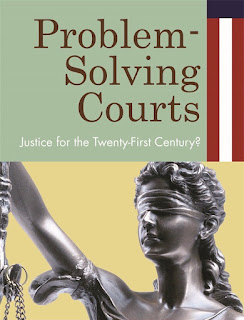Safety and Well-Being
Today at the Robin Hood Foundation, the Center for Court Innovation co-hosted a panel on neighborhood safety with Neighbors in Action and the Decarcerated podcast. Panelists included Marlon Peterson, Amy Ellenbogen, Erica Mateo, and Mark Winston Griffith.
Thanks in no small part to the good work of moderator Errol Louis, the conversation was lively and broad-ranging. The idea behind the event was to encourage a paradigm shift away from conventional law enforcement (arrest, prosecution, incarceration) as the primary response to local crime.
In making this case, the panel highlighted work currently underway in various parts of Brooklyn -- places like Brownsville, Crown Heights, and Bedford-Stuyvesant -- that seeks to engage at-risk populations, address chronic victimization, combat bias, re-make the built environment, and provide positive pathways for local young people, among other things.
The panelists were united in arguing that safety means more than simply the absence of crime. Together, they offered a vision of vibrant community life that foregrounded the absence of fear -- including fear of over-aggressive policing -- and the building of trust, which I took to mean not just trust among neighbors but between local residents and government.
Given that the conversation took place at Robin Hood, a foundation that is famous for its insistence on rigorous performance metrics, Errol Louis asked about how community well-being should be measured. This area is ripe for more thought. The panelists emphasized that building community cohesion takes years. They also pointed to the history of racism and community disinvestment in this country as realities that must be dealt with if we hope to build public trust and confidence in government.
While acknowledging the obstacles and challenges to creating healthy communities, the tone of the conversation was hopeful. The panelists encouraged both government and philanthropy to make long-term investments in the kinds of groups that are serving as connective tissue at the neighborhood level. (This echoes a point that Patrick Sharkey made in his recent book, Uneasy Peace -- that the improvements in public safety in American cities over the past generation owe a lot to the unglamorous work done on the ground by local non-profits.)
The final word for me came from Erica Mateo, who talked about the need for tangible goals, reasonable expectations, and small victories. It requires patience of course, but I believe that if you put together enough small victories that, over time, it can add up to significant change.


